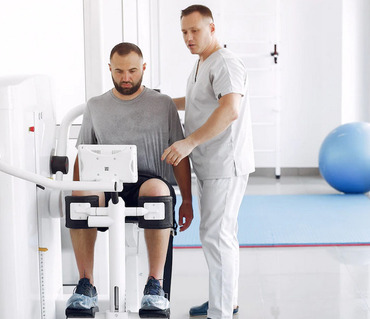Physical Therapy
After the diagnosis of the disease is made, an appropriate physical therapy program is planned according to the patient's condition. Physical therapy is done under the supervision of our specialist physicians.
Heat, light, water agents
Superficial heat (infrared, hot pack, paraffin, vortex bath),
Deep heat (ultrasound, high-intensity laser, TECAR)
Hydrotherapy (Exercise in the pool, contrast bath, spa treatment, underwater massage, whirlpool bath)
Electrotherapy
It is applied by giving a certain frequency and intensity current to the body. It can be used for the treatment of acute or chronic pain, edema, muscle strengthening or functional training of certain muscles.
Mechanotherapy
It is the application of mechanical devices and apparatus for treatment purposes.
Walking robots, arm robots, Traction, spinal decompression (waist-neck pull), pneumatic compression, CPM devices etc. used.
Manual Therapy Methods
Manual therapy is a form of physical therapy applied only by hand, without using any device or machine. In manual therapy, practitioners use only their hands to reduce problems caused by muscle spasm, muscle tension, and joint dysfunction.
Therapeutic Exercises
It is one of the most important parts of physical therapy. Personalized exercises designed according to the patient and the condition of the disease should only be given by specialist physicians and physiotherapists.
Daily Life Modifications
During the treatment of the disease, the patient may make some adjustments in his daily life. Activity arrangements, adding exercise and sports to daily life, avoiding harmful movements, nutritional recommendations, etc. may be an example of this.
Prosthesis-Orthotics use
Prostheses: Apparatuses made to imitate the missing limb.
Orthoses: Apparatuses used to protect, support and increase the performance of an existing limb. (knee brace, corset, walking stick, bandage, tape, kinesiotape etc.)

